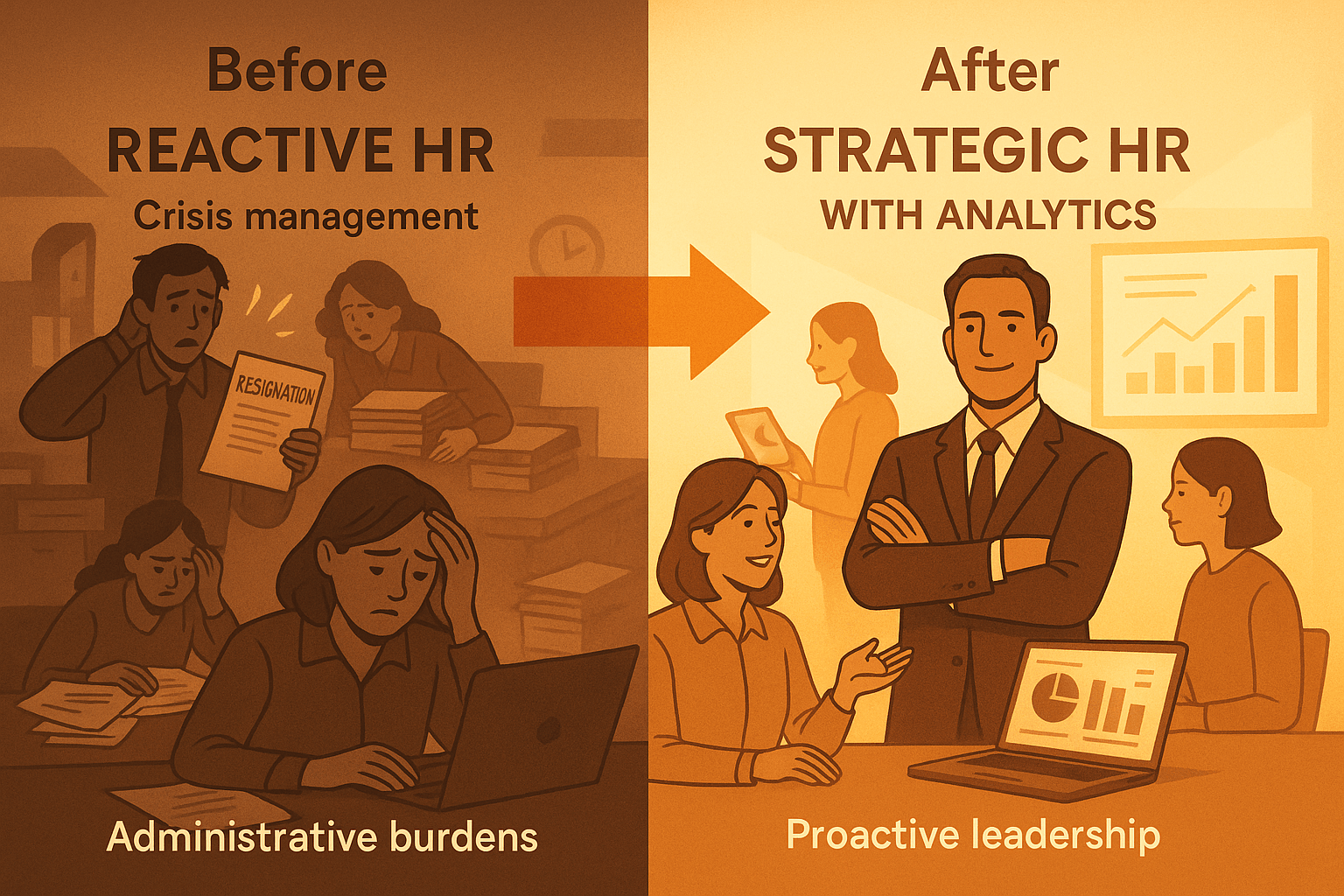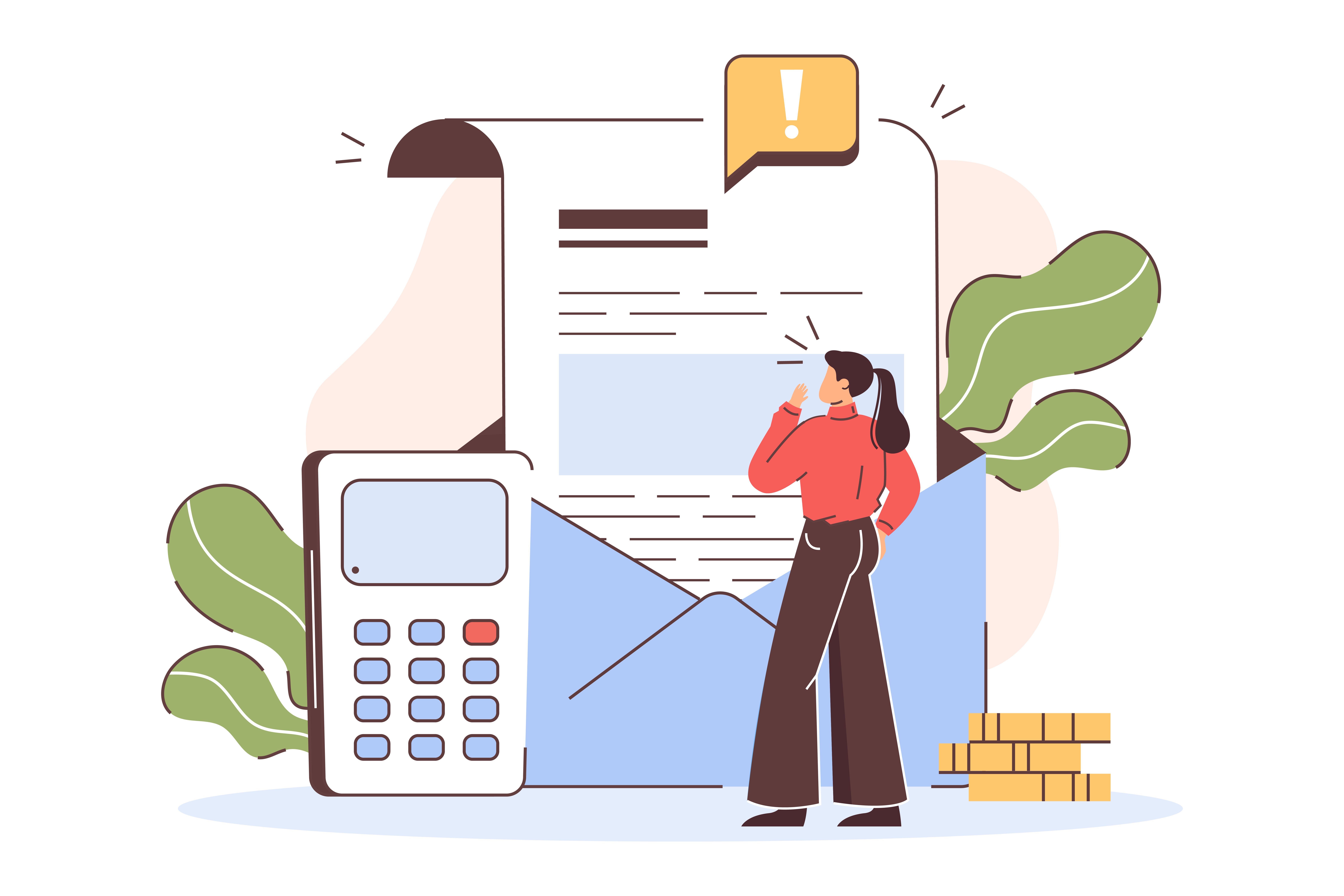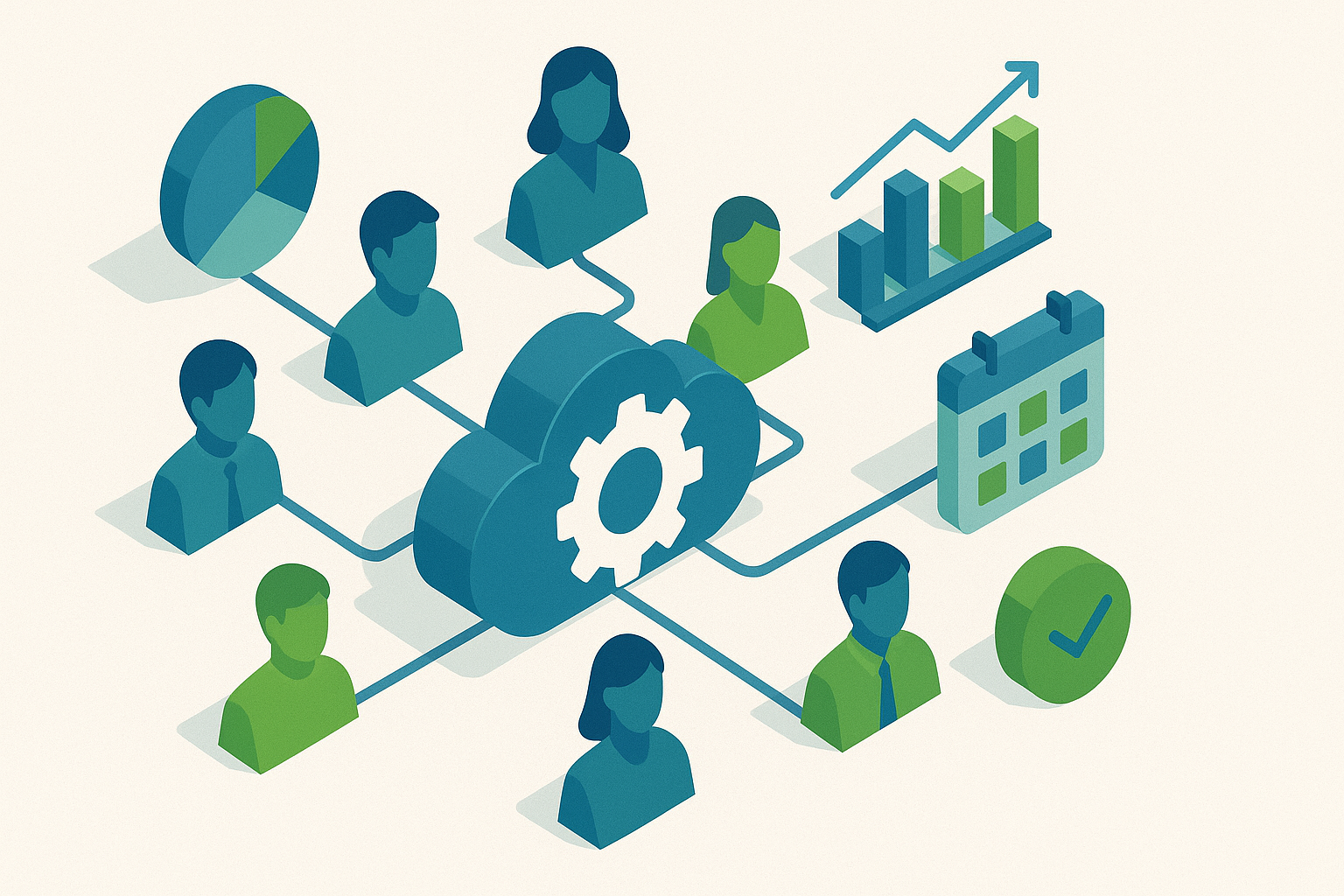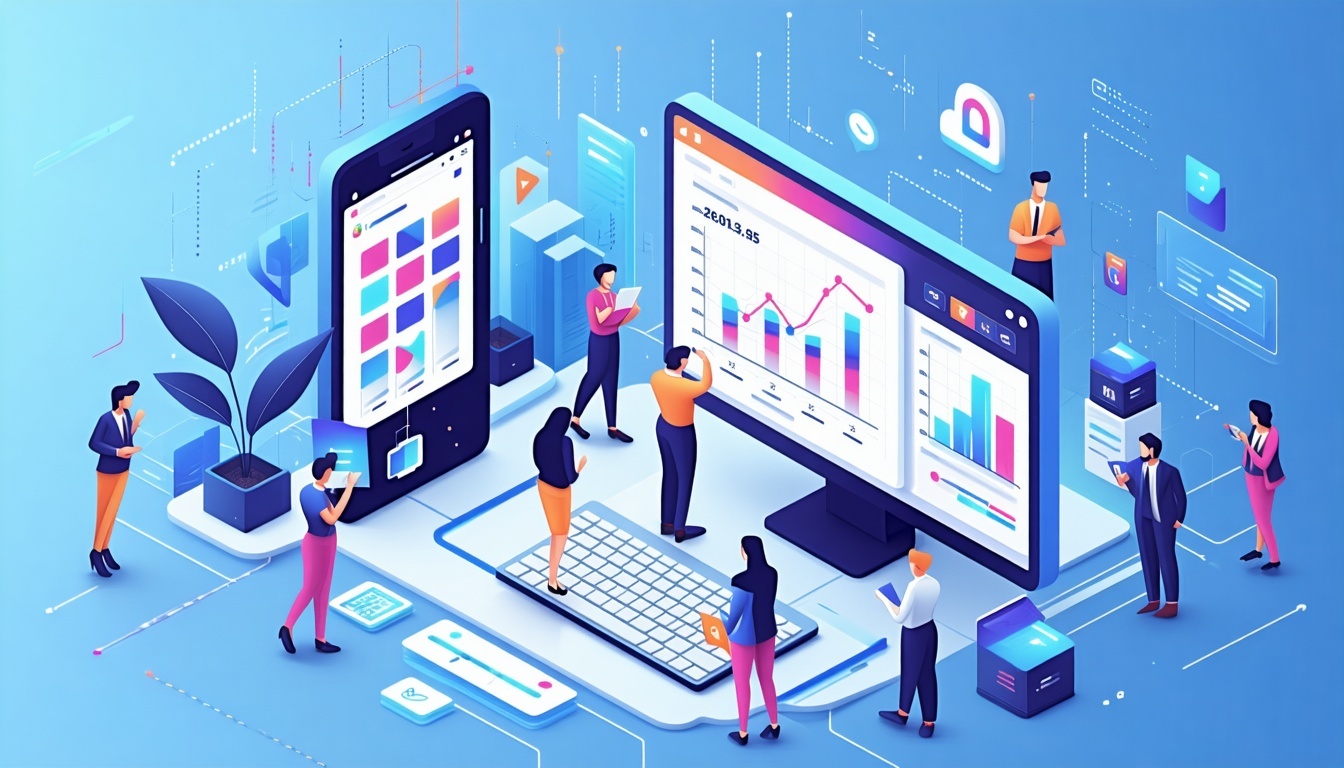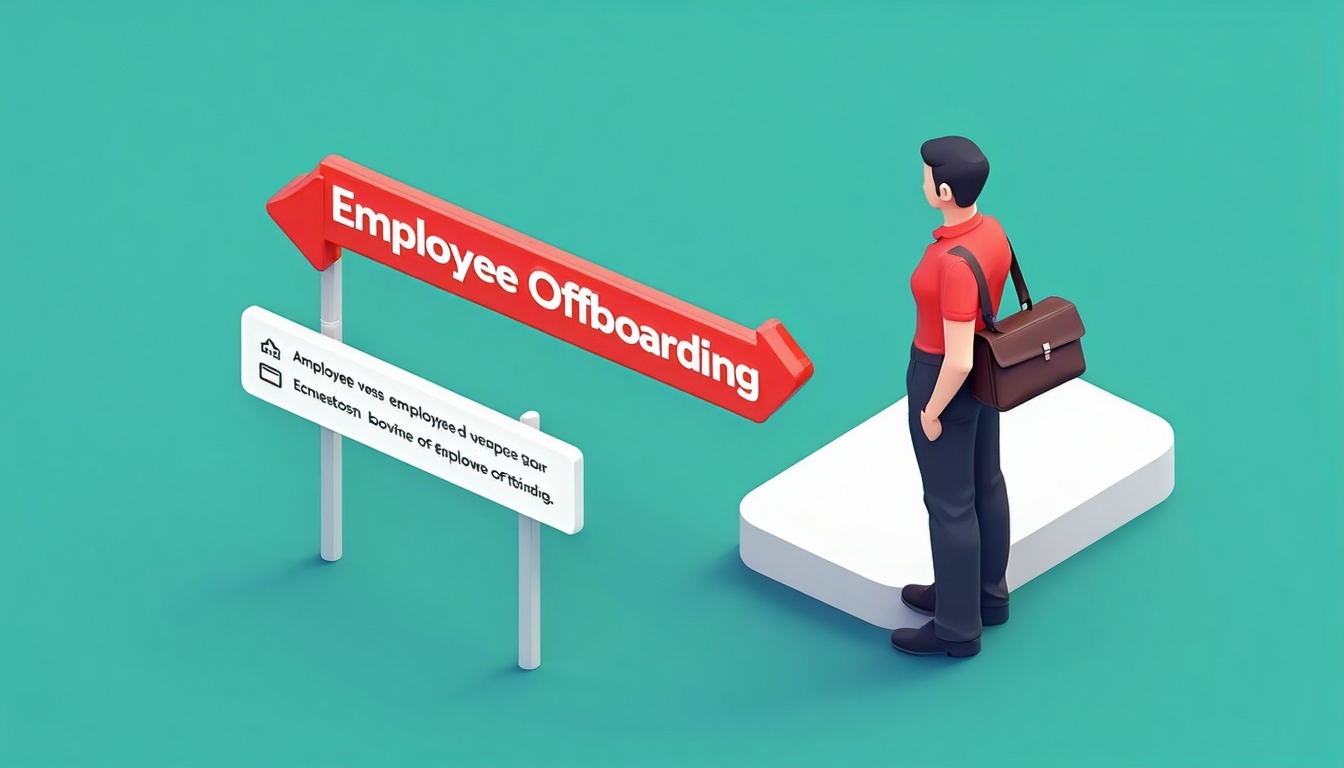Employee Self-Service (ESS): Empowering Your Workforce & Transforming HR
June 9th, 2025
6 min read

Human Resources (HR) departments often struggle with extensive administrative tasks, from managing records and payroll to handling time-off requests. This heavy load prevents HR from focusing on strategic initiatives like talent development and employee engagement. Many organizations still rely on inefficient manual processes, leading to delays, errors, and a poor employee experience.
At Lift HCM, we understand these challenges. Our expertise lies in identifying operational gaps and providing solutions that transform how organizations manage their most valuable asset: their people.
This article will explain how Employee Self-Service (ESS) empowers your workforce by providing direct access to essential information and tools. We'll define ESS, explore its core functionalities, and highlight its significant advantages for both employers and employees, driving HR transformation.
Table of Contents
- What is Employee Self-Service (ESS)?
- Key Functionalities of ESS Systems
- Advantages of ESS for Employers
- Advantages of ESS for Employees
- Mobile ESS: Empowering Employees On-the-Go
- Compliance and Data Security: A Non-Negotiable Priority
- Charting the Path Toward Workforce Empowerment
What is Employee Self-Service (ESS)?
Simply put, Employee Self-Service (ESS) is a feature within HRIS or payroll software. It allows employees to access and manage their HR-related information and tasks independently. This means they don't need direct intervention from HR staff.
This digital portal acts as a central hub for various employee needs. It puts control and convenience directly into their hands. ESS fundamentally shifts the traditional HR dynamic, moving from an HR-centric model to a more empowering, employee-centric one.
How ESS Transforms Traditional HR Processes
ESS transforms traditional HR processes by automating and streamlining manual operations. Historically, an employee might submit a paper form for an address change, time off, or to view a pay stub. Each interaction consumed HR time and could lead to delays.
With ESS, these processes are digitized and accessible 24/7. This significantly reduces the administrative load on HR. It also improves the speed and accuracy of information exchange. This transformation frees up HR professionals to focus on strategic initiatives that truly impact organizational growth and employee development.
The scope of this transformation becomes clear when you examine the measurable impact organizations achieve through ESS implementation. These results demonstrate why forward-thinking companies consider ESS not just an operational improvement, but a strategic competitive advantage.
Key Functionalities of ESS Systems
The power of an ESS system lies in its diverse range of functionalities. All features are designed to put information and control directly into the hands of employees. These capabilities create a more efficient and transparent work environment.
Here are the core capabilities that transform daily HR operations:
Personal Information Management: Data at Employees' Fingertips
A fundamental aspect of ESS is allowing employees to manage their personal information. This includes updating:
- Contact details
- Emergency contacts
- Marital status
- Banking information for direct deposit
Previously, these changes often required paper forms and HR submission. This process was prone to delays and errors. With ESS, employees can securely log in and make updates themselves, ensuring their data is always accurate.
Payroll and Benefits Access: Transparent Financial Records
ESS provides employees with immediate and secure access to their financial records. This includes:
- Pay stubs
- W-2 forms
- Benefits enrollment details
Employees can view current and past payslips and understand deductions. They can also access year-end tax documents as needed. For benefits, ESS allows review of chosen plans, comparison during open enrollment, and sometimes direct changes within the system.
This level of transparency builds trust and provides clarity around compensation and benefits. It also significantly reduces inquiries to payroll or benefits departments, allowing those teams to focus on more complex issues.
Leave Requests and Time-Off Management: Removing Bureaucratic Barriers
Managing time off (vacation, sick leave, personal days) can be complex in traditional systems. ESS simplifies this process. Employees can:
- Submit leave requests directly through the portal.
- View accrued time-off balances.
- Track the status of their requests.
Managers can review and approve or deny requests online, streamlining the workflow. This digital approach eliminates paper forms and reduces back-and-forth communication. It ensures both employees and managers have real-time understanding of leave schedules.
Performance and Development Tools: Supporting Career Growth
Many advanced ESS systems integrate tools for performance and professional development. This can include access to:
- Performance reviews
- Goal-setting platforms
- Training modules
Employees can view feedback, track goal progress, and sign up for internal training. They can also access learning resources directly. This functionality empowers employees to take a proactive role in their career growth and development.
Advantages of ESS for Employers
Implementing an Employee Self-Service system offers many benefits for employers. These go beyond simple convenience, translating into tangible improvements in operational efficiency, data integrity, and financial performance.
Reducing Administrative Load and Improving Efficiency
A significant advantage for employers is the drastic reduction in administrative burden on HR and payroll departments. By empowering employees to manage their own data and requests, HR staff are freed from repetitive tasks like:
- Answering routine questions about pay stubs.
- Updating addresses.
- Processing leave requests.
This allows HR professionals to focus on strategic initiatives like talent acquisition and employee development. Automation in ESS streamlines workflows, leading to faster processing and fewer manual errors, improving overall operational efficiency.
Enhancing Data Security and Accuracy
Traditional manual HR processes often involve handling sensitive employee data through various channels, increasing security risks. ESS systems provide a secure, centralized platform. Access is typically controlled through secure logins and multi-factor authentication (MFA).
When employees input their own data, it reduces data entry errors that can occur during manual transcription. This direct input mechanism enhances the accuracy and integrity of employee records, which is crucial for compliance and informed decision-making.
Cost Savings: Beyond the Bottom Line
The financial benefits of ESS implementation can be substantial. Beyond reducing labor costs, organizations can see significant savings in:
- Printing
- Paper
- Postage costs for distributing pay stubs and W-2s.
The reduction in HR administrative time also translates into cost savings. Staff can be reallocated to higher-value activities. Improved data accuracy and compliance fostered by ESS can help avoid costly penalties, contributing to a healthier financial bottom line.

While these operational benefits create immediate value, the financial impact of ESS implementation often exceeds initial expectations. Understanding the complete economic picture helps organizations make informed investment decisions and set realistic ROI expectations.
Advantages of ESS for Employees
While employers gain significant operational benefits from ESS, the advantages for employees are equally compelling. ESS fosters a more engaged, transparent, and empowered workforce, impacting overall satisfaction and their relationship with their employer.
Fostering Transparency and Trust
ESS systems significantly enhance transparency. Employees gain direct access to critical information such as:
- Pay stubs
- Benefits enrollment details
- Time-off accruals
This immediate and open access demystifies processes and builds trust. When employees can clearly see their pay calculations or available leave, it reduces uncertainty and fosters fairness. This transparency is a key driver of employee satisfaction and retention.
Promoting Autonomy and Control Over Work Lives
Increased autonomy is one of the most empowering aspects of ESS. Employees can:
- Update personal details.
- Submit leave requests.
- Access tax documents at their convenience.
This means they don't need to adhere to HR office hours or wait for assistance. This control over their HR-related tasks gives employees independence and reduces reliance on administrative processes.
Mobile ESS: Empowering Employees On-the-Go
The widespread use of smartphones and the demand for flexibility have made mobile access a standard expectation. For Employee Self-Service, a robust mobile application is essential. It empowers employees to manage their work lives from anywhere, at any time.
The Rise of Mobile Workforce Expectations
Today's workforce is increasingly mobile and accustomed to instant access through their devices. Employees expect the same convenience for work-related tasks. Whether they are remote, field service, or commuting, the ability to perform HR tasks from their smartphone is highly valued.
Meeting these mobile workforce expectations is crucial for fostering employee satisfaction and staying competitive in the talent market.
Key Features of Mobile ESS Applications
Effective mobile ESS applications replicate core desktop functionalities, optimized for mobile. Key features typically include:
- Secure login (often with biometric options)
- Viewing pay stubs and tax documents
- Submitting and tracking leave requests
- Updating personal information
- Accessing company directories
- Reading company news and announcements
Some advanced mobile ESS apps may also support mobile time tracking or expense reporting. The focus is on an intuitive user experience for quick, simple tasks.
Security Considerations for Mobile Access
While convenient, security for mobile ESS is paramount. Organizations must ensure mobile access to sensitive employee data is protected. This includes:
- Strong encryption for data (in transit and at rest).
- Multi-factor authentication (MFA) requirements.
- Secure password policies.
- Potentially, device management capabilities for remote data wiping if a device is lost.
Regular security audits and employee education on mobile device security best practices are also critical.
Compliance and Data Security: A Non-Negotiable Priority
Managing employee data in the digital age comes with significant responsibilities. This includes complying with diverse regulatory frameworks and ensuring robust data security. For ESS systems, these are fundamental requirements.
Navigating Regulatory Frameworks
Organizations operate within complex regulatory frameworks governing data privacy and employment. This includes laws like:
- GDPR (Europe)
- CCPA (US)
- Industry-specific regulations
ESS systems must be designed to facilitate compliance. This means ensuring proper consent mechanisms, adhering to data retention policies, and providing individuals with rights concerning their personal data. Non-compliance can lead to hefty fines and reputational damage.
Protecting Employee Data in ESS Systems
The sensitive nature of employee data (personal details, financial information, health records) makes its protection paramount. ESS systems must incorporate stringent security measures to safeguard against:
- Unauthorized access
- Data breaches
- Cyber threats
Key security measures include strong encryption, multi-factor authentication (MFA), regular security audits, and strict access controls. Employee training on security best practices is also crucial. A data breach can have devastating consequences, underscoring the importance of comprehensive data security.
Charting the Path Toward Workforce Empowerment
Employee Self-Service (ESS) is more than a technological upgrade; it's a strategic imperative. We've seen how ESS bridges the gap between employees and HR, defining its core functionalities across various aspects of employment.
The advantages for both employers and employees are clear: reduced administrative burdens, enhanced data security, cost savings, increased transparency, and greater autonomy. Mobile ESS and seamless integration with broader HR systems further solidify its role in creating a unified, efficient HR ecosystem.
ESS is a strategic tool for growth and resilience. By empowering your workforce with direct access to information and HR task management, you create a more engaged, productive, and trusting environment. This frees up your HR teams to focus on strategic initiatives that drive success.
Are you ready to unlock the full potential of your workforce through cutting-edge Employee Self-Service solutions? At Lift HCM, we provide comprehensive payroll and human capital management platforms. These integrate seamlessly, empowering your employees and streamlining HR operations.
Discover how our tailored ESS solutions can transform your organization, improve efficiency, and enhance employee satisfaction.
Learn more about Lift HCM's Employee Self-Service solutions and request a personalized demo today.
Caitlin Kapolas is a results-driven professional with a strong background in account management and retail. She is dedicated to improving client experiences and building lasting relationships. Caitlin excels in identifying client needs, resolving issues, and implementing customized solutions that drive value. Her effective communication skills ensure high client satisfaction and loyalty, making her a trusted advisor and partner in meeting client needs with precision and professionalism.
Topics:



